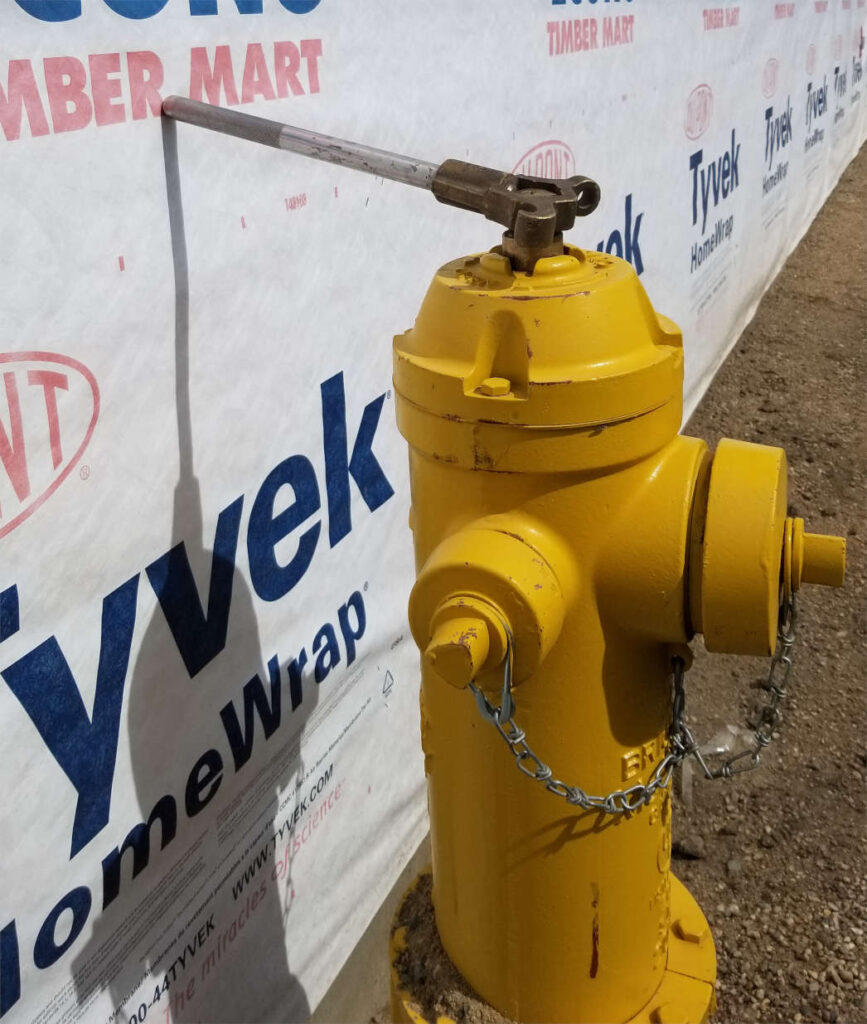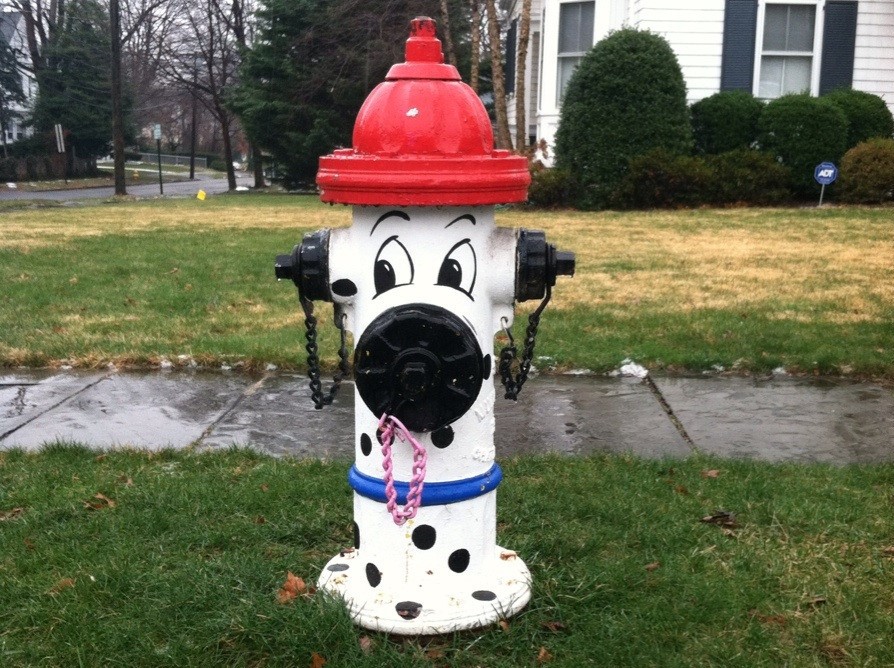… but does it do what it’s meant to do?
This article is aimed at the fire services in small to medium sized communities, where the resources needed for robust civil engineering and infrastructure maintenance programs are often scarce.
“Every building shall be provided with an adequate water supply for firefighting.”
NBC 2010 3.2.5.7.1
This might be a contender for “most overlooked code reference”. (I think there should be such an award, don’t you?)
How much water is “adequate” anyway?
The basic question is: “If a building is on fire, how much water is needed to put the fire out?” More precisely, “What volume of water is necessary in order to absorb the heat energy produced by a fully involved building and its contents, such that the fire can be controlled and extinguished?” This is a complicated question, and there are a number of methods (sixteen or more, according to the NFPA) that have been developed to arrive at an answer. Factors include the building’s size, construction, use, contents and proximity to other buildings. Some methods are more complex than others, and yield different results for different purposes. That is the territory of fire protection engineers, which I am not.
At the business end of a fire hose (my end), the formula is simple: “Big fire, Big water”. In other words, if the volume of water applied by fire hose is insufficient to cool and extinguish the fire, then the attempt will fail. The canny fire commander understands this equation, and will instead use limited water supplies for protecting things that are not yet on fire, and keeping them that way. It is useful to have some advance knowledge of the state of the water supply available to any given building in one’s fire protection area, and this is an example of the importance of plan reviews and pre-incident planning.
A simple calculation, as outlined by the Fire Underwriters Survey, is simply based on floor area, with some adjustments for building construction and occupancy. For example, a 1000 square foot wood-frame building with no unusual use-related risks, and no “exposed” buildings close by, may be calculated to require about 840 US gallons per minute for fire suppression. This is the volume of water that is expected to be sufficient for the fire department to extinguish a large fire in the building. This is a reasonable amount of water to expect from most hydrants (see flow testing, below). It is also within the pump capacity of a typical fire engine. So far, so good.
The calculations get more complex with larger buildings, or premises with large fire loads or hazardous processes. These will require a much larger water supply for firefighting, and this demand can exceed the municipal water system’s output, or the fire department’s capacity to pump the water down hoses and out of nozzles.
Hopefully (but not assuredly) water supply for firefighting was considered in the design of the building, or the subdivision. If hydrants are present, then with any luck they will provide the necessary volumes of water required for fire suppression. If the building has a sprinkler system, then chances are very good that its design, including water supply considerations, was excellent. Often, though, the water supply is woefully inadequate. It is the job of the fire department to find this out one way or the other, and plan accordingly.
How do we know our water supply is adequate?
The presence of hydrants is a hopeful sign, but it should never be taken for granted that water will actually be produced in the quantities needed, or even any at all. Fire departments must include a review of all hydrants as part of their annual planning cycle, including operational checks and periodic flow tests. Whether the hands-on work is done by the fire department itself or (more likely) the Public Works department is immaterial: the point is that it needs to get done, and the resulting knowledge needs to be put to use.
Operational Testing: The most basic test of a hydrant is to open it, and see if water comes out. Your Public Works department likely carries out an annual flushing program, which involves opening hydrants, as well as operating the valves that control the water mains, in a specific sequence designed to wash the sediment out of the lines. Their records will show any hydrants that failed, or that need repair. (Establish a good relationship with this department, and maybe even offer help with this work. And bring cookies. Cookies are important).
If it falls to you to undertake this annual task of inspecting and testing hydrants, remember the following:
- Coordinate with Public Works and the water plant. They appreciate the heads up. (A sudden unexplained surge in water usage can indicate a water break, which is never a good day for those folks. Be kind to their nerves!) Discuss your plans with them, in detail, and they will have useful information for you in return.
- Let your municipality’s PR department know your plans, as they will want to put out an advisory to residents. (Hydrant use can disturb sediments, briefly turning the tap water brown, which is bad for their laundry, and therefore also bad for your popularity if it happens without warning).
- Occasionally, a hydrant can’t be shut off. Protect against this embarrassing situation by using a gate valve. It is also handy to have the tools for shutting off the hydrant valve, which is located a few feet in front of the hydrant, and often very hard to find. (Don’t open hydrants on Friday afternoons, or you’ll be buying more than cookies if one blows up on you!)
- The discharge from a hydrant can quickly damage lawns, shrubs and other landscaping, which is not considered an act of kindness. Avoid this by using a diffuser or a length of hose to divert the water.
- Remember what you learned in Firefighting 101: open the hydrant all the way open (17 to 21 turns, usually) and turn the nut slowly to avoid water hammer, especially when closing the hydrant. No one wants to be that guy that blew up the water system.
- After the hydrant is closed, check to see if it drains. Some drain slowly, so wait a few minutes. Some do not drain at all, and should be tagged to indicate this.

This basic annual operational check will tell you some basic, useful things about a hydrant’s condition, which you can report back to Public Works for their maintenance planning. If a hydrant is not in working order, put an Out of Service tag on it, so that the engine crew responding to a fire nearby doesn’t waste time trying to connect to it.
Flow Testing is done to determine the maximum volume of water a given hydrant can produce while maintaining the minimum required pressure in the municipal system. This knowledge is of great value to the fire department, as it provides the missing variable in the equation discussed above. The test results can also help the engineering department identify problems in the water distribution system.
We won’t get into the details of flow testing in this article. Training is necessary, and some excellent courses are offered by companies that specialize in municipal water services. (On a side note, firefighters often don’t have a solid understanding of their community’s water system. This is a pity, as this knowledge helps officers and pump operators make better-informed decisions on the fireground).
Some very basic equipment is required: a pitot gauge to measure the flow pressure of the test hydrant, and a pressure gauge to measure the static and residual pressure on another hydrant. These readings are fed into a pair of formulas, and the result is the hydrant’s maximum water production capacity, or flow rate, expressed in gallons US per minute (GPM) or litres per minute. (By the way, don’t confuse flow rate with pressure. They’ll cover that in the course, too, along with the significance of the 20 PSI residual pressure.)
Many fire departments use the NFPA colour-coding system for marking hydrants according to flow test results. In this system, the hydrant barrel is yellow (municipal) or red (private) while the caps and bonnets are painted as follows:

These colours gives the fire department a rough but useful guide to the quality of the hydrants available for its use when responding to a structure fire. For example, if the fire engine’s pump has a rating of 1050 GPM maximum output, then the operator can connect to a blue or green hydrant with confidence, and an orange hydrant with care. Faced with a large fire and a red-coded hydrant, the wise commander will call for tankers.
In some cities a different colour scheme is used, but the principle is the same.

Maintenance and repair of hydrants is most often carried out by public works, but they will greatly appreciate the information gathered by the fire department. Develop a system for recording deficiencies whenever you interact with a hydrant: hard to turn, broken or seized caps, worn or missing gaskets, leaking water from flanges, loose things that shouldn’t be loose, water coming out of the ground around the hydrant, faded paint, barrel extension needed, shrubs needing trimming, obstructions and so on.

Winterizing of hydrants is an annual event in most Canadian locations. While this in itself is a topic for another day, this procedure represents another opportunity to gather information on hydrants and to make sure that they will be operable (and visible) in even the worst conditions.
The fire hydrant inspection and testing program is one of the most important tasks in your annual schedule. The work that you put into it will pay off in better water supplies, better pre-incident plans, better-educated firefighters, and more effective fire suppression. This is also an opportunity to build a good working relationship with your public works and water departments. The people in your local building standards office will be of immense help with building plans and records, too, when you want to calculate those fire flow requirements and build pre-incident plans. (They also like cookies).
Recommended Reading
American Water Works: M17 Fire Hydrants: Installation, Field Testing, and Maintenance
NFPA 291: Recommended Practice for Fire Flow Testing and Marking of Hydrants
Meyer Fire – How to Determine Fire Flow (IFC Method)
The Fire Protection Research Foundation – Evaluation of Fire Flow Methodologies

